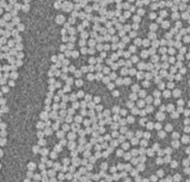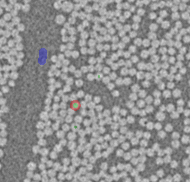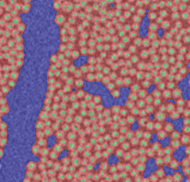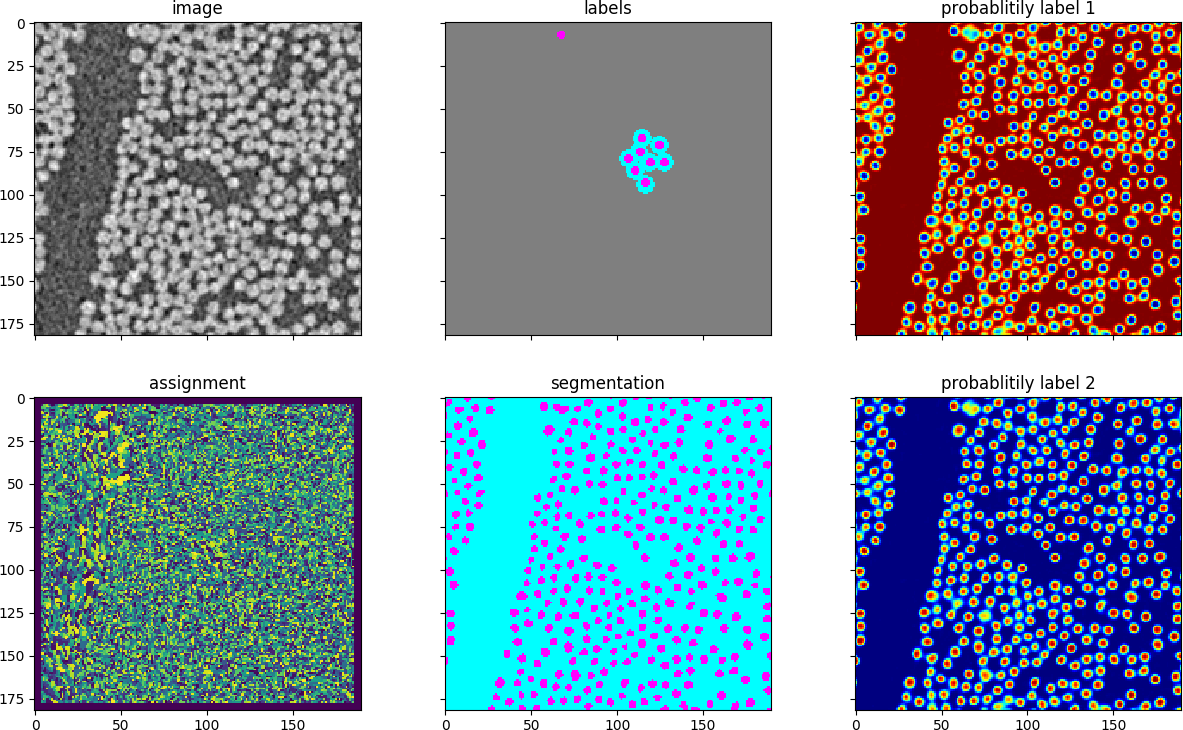A py version of InSegt. Original matlab version was used in publications prior to 2020.
Given lited labeling of an image, InSegt can provide full segmentation of this, or similar, image.
| Input image | User labelings | Segmentation result | Screenshot |
|---|---|---|---|
 |
 |
 |
 |
- Download the code
- pip install -/path/to/insegtpy/folder/containing/setup.py/
InSegt has an interactive annotator (implemented in insegtpy/annotators) and, most importantly, a segmentation model. We have developed a few different segmentation models (placed in insegtpy/models), and for some of them we provide more than one segmentation. For help with choosing an appropriate model and suitable parameters, take a look at the provided Jupyter notebooks and python scripts.
Models are built using two functions:
sk_basic_segmentoruses intensities from image patches as features clustered using minibatch k-means from scikit-learn. Is also available in a multi-scale version.gauss_features_segmentoruses (multi-sigma) Gauss features clustered using km-tree. Also available in a multi-scale version.
-
demos/skbasic_glassfibre_demo.py, a demo script wheresk_basic_segmentoris used for detecting fibres in a CT image of glass fibres. A good place to start, and should also run regardless of whether cpp code is misbehaving. -
demos/gaussfeat_nerve_demo.py, a demo script showing how to use multiscale segmentation withgauss_features_segmentor. As examples we use CT nerves image.
notebooks/Patch-based non-interactive fibre segmentation.ipynpnotebooks/Multiscale Gauss features InSegt on nerves.ipynpnotebooks/Volumetric InSegt on nerves.ipynp
-
The main of
models/kmdict.py, shows the use of km tree for clustering, here exemplified on patches from an image of carbon fibres. Relies onkm_dict.cppcompiled intokm_dict_lib.so. -
The main of
models/gaussfeat.pyshows the extraction of Gauss features from the image.*annotators/annotator.py, a module containing theAnnotatorclass.Annotator, is a widget for drawing on an image. It is based on qt for python. All interaction is using mouse clicks, draws, and keyboard input. Help is accessed by pressing H. Demo scriptdeomos/only_insegtannotator_demo.pyuses an image fromskimage.data. -
annotators/insegtannotator.py, a module containingInSegtAnnotatorclass, which is a subclass ofAnnotatorextended with the functionality for interactive segmentation. To useInsegtAnnotatoryou need a processing function that given labels (annotations) returns a segmentation. Demo scriptdeomos/only_insegtannotator_demo.pyuses an image fromskimage.dataand a processing function based on a mean color for every label, and a pixel-to-color distance.
InSegt preforms:
- Dense feature extraction. This may be intensities collected around every pixels, or other features computed in every image pixel. In fibre example below we extract patches around each pixel, so features are not extracted from boundary pixels.
- Feature clustering. This uses sing some variant of k-means clustering to cluster image features. The assignment image shows the outcome of pixel clustering.
- Propagating labeling. This propagates user-provided partial labelling (labels) according to the assignment. The outcome of propagation is a probability image for every label class (here probability label 1 and 2). Thresholding probability image yields segmentation.
